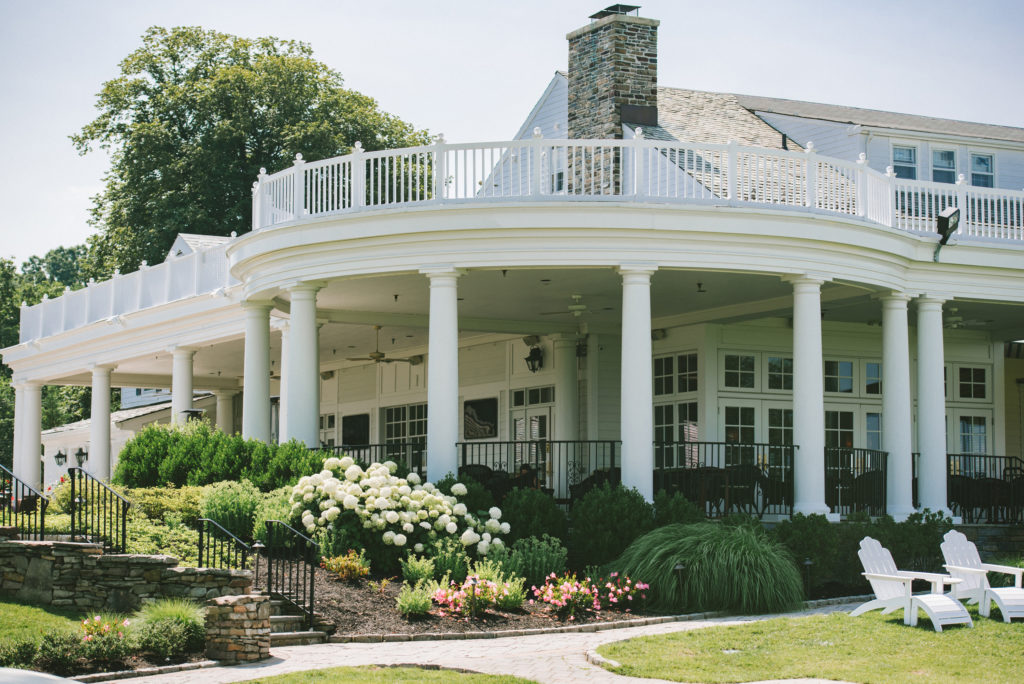Join the Club
Where and how we gather has changed over the past 18 months. Separation from co-workers, friends, and even our families has necessitated new ways to communicate and to recreate.
Not surprisingly (at least to us), the appeal of golf grew during the pandemic. Being outdoors, safely socializing, and distancing across fairways was widely embraced. The industry had to scramble to adjust and welcome this influx of new and returning players, while facing distancing guidelines, supply chain challenges, and labor shortages.
For those who had already embraced the game or who belonged to a club, the connection became stronger. People turned to their golf and country clubs to fill voids and become central to their “stay at home” lifestyle. Adhering to various state regulations, clubs were quick to offer a safe space to gather and play. The club lifestyle became increasingly important.
At HUNTER, we’re fortunate to represent many private golf and country clubs. We applaud their innovation in creatively addressing and meeting the needs of their members through special programming, safe, on-site experiences, and staying in tune with their needs.
Operators became innovators by unveiling a variety of new offerings and services: to-go dining, grocery shopping and delivery, chef-led online cooking classes, and even home delivery of special occasion cakes. A few examples from some of our club clients.
The Desert Mountain Dream Home Tour gave homebuyers a way to virtually visit luxury homes for sale within Desert Mountain’s expansive 8,000 acres north of Scottsdale.
Reynolds Lake Oconee offered grocery service to its members, available either by pick-up or home delivery. The executive chef also created a series of virtual cooking classes, making the ingredients available for easy pick-up or delivery.
At Mountain Ridge Country Club, the open-air tent, with outdoor dining, became the new club hot spot. Members at New Jersey’s Montclair Golf Club also flock to the patio with its covered areas, al fresco dining, and gathering spots, including a firepit and seating.
As restrictions eased, clubhouse dining returned. And with it, members continued to make clubs their social hub.
One general manager said, “In all my years, I’ve never seen this level of member demand to use their club. Our patio has become ‘the’ place to be.”
Even indoors—and sticking to strict protocols—clubs are regarded as safe places, known versus unknown. Familiar faces of friends and staff add to a sense of home. And now, as restaurants open, private clubs gain importance as a culinary safe haven.
Dining rooms might be hosting fewer special events, but they’re serving more a la carte dinners and realizing numerous covers on weeknights. According to Diana De Lucia, founder of Golf Kitchen, private golf and country club dining is becoming more relevant than ever before. Members are heavily utilizing clubs and talented culinary teams both front and back of the house have worked diligently to ensure the safety and satisfaction of their membership and staff.
“A great chef in a private club needs to be highly qualified, as he or she must be flexible with the cuisine on a daily basis, often serving fine dining meals and lunchtime fare simultaneously,” De Lucia said.
Relying on the club goes beyond golf and food. Continuing a trend that was always gaining steam before the pandemic, clubs are winning back families with more amenities. And they served a vital role giving kids something to do, including tennis, golf, equestrian, or water sports, often with expert instruction.
At Nassau Country Club on New York’s Long Island, 125-year-old traditions are being renewed with a resurgence of young families joining to give their kids a chance to learn “lifetime sports” like golf, tennis, and swimming.
Desert Mountain Club created “outdoor studios” for a variety of fitness classes, while outdoor courtyards were commandeered for open-air spin classes. Like golf, interest spiked in tennis and the pickleball craze continued to boom. This outdoor-centric lifestyle is here to stay, according to their fitness director.
Kudos to these clubs and all the others that responded to a crisis by doing what they do best: Serving their members. By recognizing their inherent virtues—access to the outdoors, a safe space, and promoting camaraderie—clubs gave their members opportunities to live the most normal lives possible.
It’s no wonder clubs and communities across the country are seeing a surge in interest and membership. It’s a trend we expect to continue well into the future.
